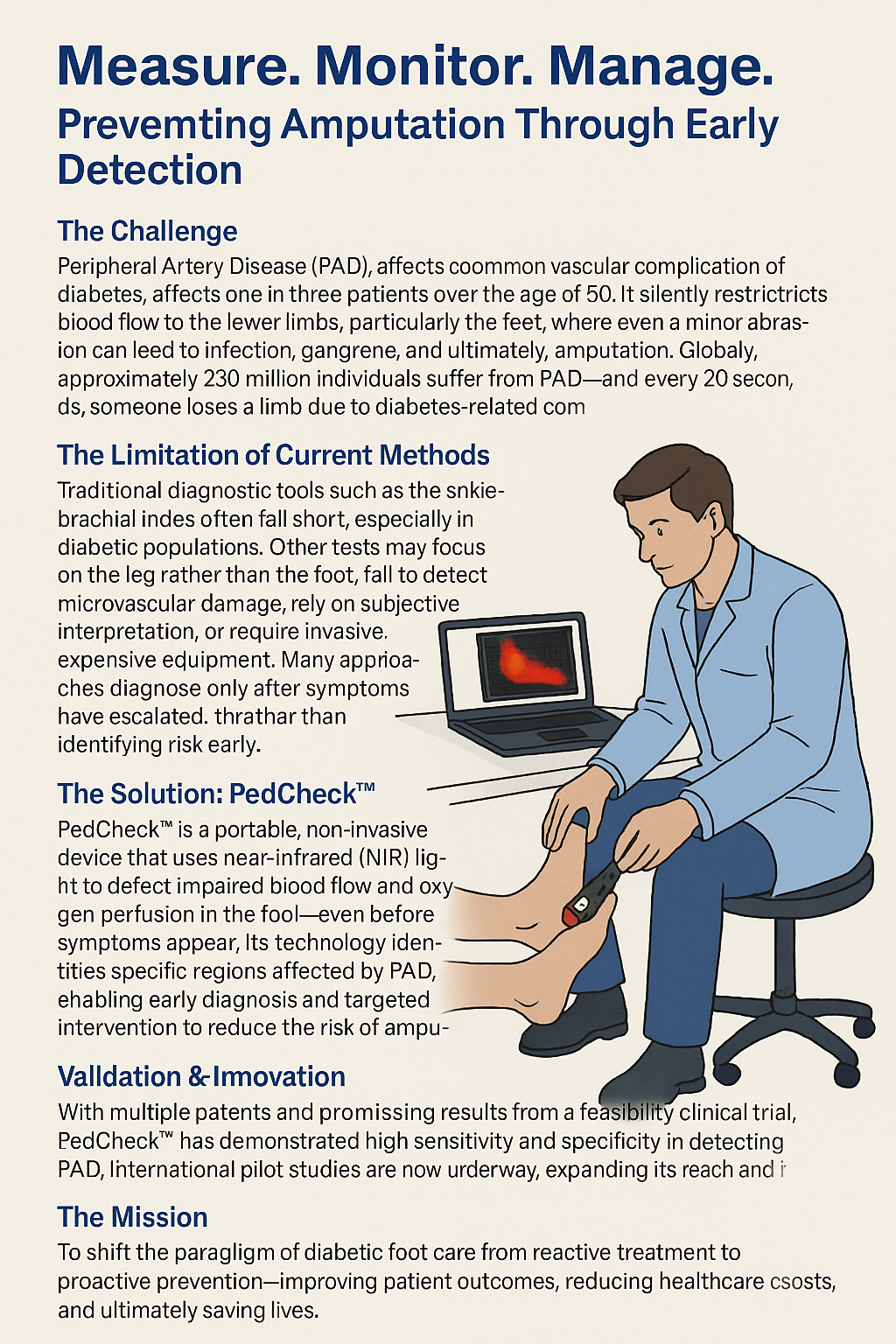The Challenge Peripheral Artery Disease (PAD), a common vascular complication of diabetes, affects one in three patients over the age of 50. It silently restricts blood flow to the lower limbs, particularly the feet, where even a minor abrasion can lead to infection, gangrene, and ultimately, amputation. Globally, approximately 230 million individuals suffer from PAD—and every 20 seconds, someone loses a limb due to diabetes-related complications.
The Limitation of Current Methods Traditional diagnostic tools such as the ankle-brachial index often fall short, especially in diabetic populations. Other tests may focus on the leg rather than the foot, fail to detect microvascular damage, rely on subjective interpretation, or require invasive, expensive equipment. Many approaches diagnose only after symptoms have escalated, rather than identifying risk early.
The Solution: PedCheck™ PedCheck™ is a portable, non-invasive device that uses near-infrared (NIR) light to detect impaired blood flow and oxygen perfusion in the foot—even before symptoms appear. Its technology identifies specific regions affected by PAD, enabling early diagnosis and targeted intervention to reduce the risk of amputation.
The device is intuitive, fast, accurate, and affordable—ideal for use across healthcare settings by physicians, podiatrists, nurses, lab technicians, and more. Cloud-based AI delivers instant analysis and actionable insights, while ongoing measurements can track the effectiveness of therapies such as offloading, medication, or revascularization.
Validation & Innovation With multiple patents and promising results from a feasibility clinical trial, PedCheck™ has demonstrated high sensitivity and specificity in detecting PAD. International pilot studies are now underway, expanding its reach and impact.
The Mission To shift the paradigm of diabetic foot care from reactive treatment to proactive prevention—improving patient outcomes, reducing healthcare costs, and ultimately saving lives.

